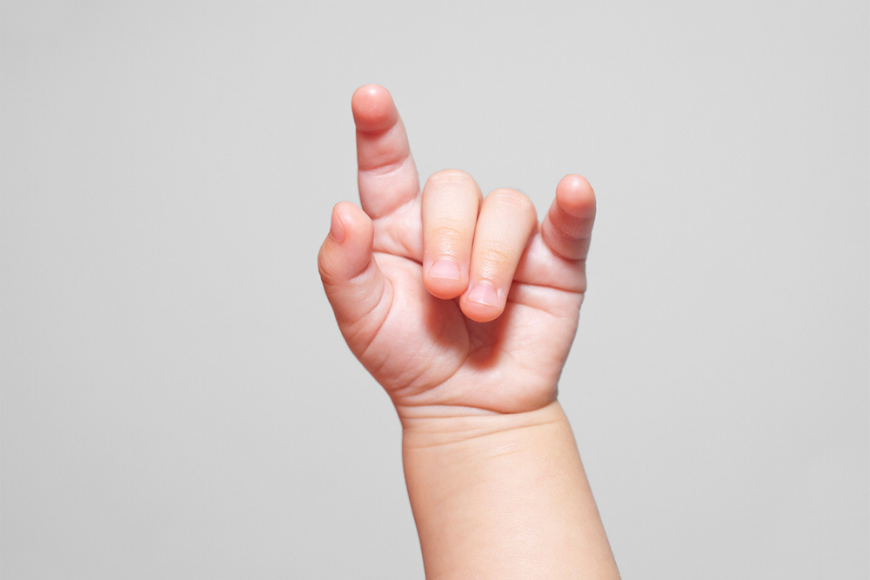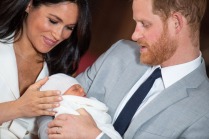Baby Sign Language: A Guide for Parents
Is baby signing the new baby talk? Here's your guide to Baby Sign Language and what it could mean for you and your child
30 March 2021
Clarice

Ready to give sign language a go?
Let's face it — for months after they're born, babies aren't yet physically capable of speech and even if they try, they can't process words fast enough and have very little control of their tiny tongue.
As mums, we can't count how many times we've often struggled to understand our baby's needs and tantrums.
That's where Baby Sign Language comes in. Baby sign language is an easy-to-teach method using simple gestures to help parent and child effectively communicate better, and it's steadily growing in popularity.
And while it might seem like a new concept to parents, baby sign language kicked off in the US in the early 1980s by psychologist Dr. Linda Acredolo and child development expert Dr. Susan Goodwyn.
At the time, Dr. Acredolo noticed that her daughter was making up signs for certain objects and needs: "If she saw a flower, for instance, she'd point at it, wrinkle her nose, and sniff."
What are the benefits of learning baby sign language?
The key thing to remember about baby sign language is your child's happiness. Using sign language helps you understand their needs and wants better, and according to Dr. Michelle Macias from the American Academy of Pediatrics, it also "helps cement your bond".
Most parents who successfully teach their baby to sign find their children less prone to tears and tantrums.

When should I start teaching my baby to sign?
From 6-8 months old is a great time to introduce sign language to your baby. This is because toddlers begin to process the meaning of sounds at that age, according to Dr. Gerald W. McRoberts Haskins from speech and language research institute Haskins Laboratories.
At about 8 to 9 months old, most babies may already be waving waving or pointing to something they want.
A formal sign language program isn't required. You can teach your child signs in your day-to-day routines with them by showing the gesture and saying the phrase or word along with it. It's important to stay consistent and patient throughout the process.
Will learning sign language affect my child's development?
It's a good idea to bring in baby sign language even if your child is capable of hearing and speech. You might be hesitant at first and you're not alone because many new parents wonder if it will have an effect on language development.
The good news is that baby sign language can be beneficial for your child's speech and language development. Several learning and speech researchers have suggested it may even boost your baby's IQ!

But let's not get too ahead of ourselves as there's not a lot of solid research on it yet... the topmost priority of baby sign language is improving communication between you and your child.
Tips for teaching babies sign language
Consider these tips to make baby sign language a smoother process for you and your child.
- Start with a few basic signs that you feel will be used most often, such as "drink", "nappy change" or "eat".
- Be patient and follow your baby’s signs. Don't be frustrated if your child is not following your own signs as many babies invent their own gestures and signs.
- Consistency is key so you must speak and sign at the same time. After all, you'd want to encourage communication, not replace verbal speech with sign language.
- Avoid signing and gesturing for one object/meaning. By this, we mean if you're teaching the sign for "cat" whenever you and your child pass by your neighbour's cat, the kid might associate it with that one cat alone. Try signing for "cat" whenever your child sees a cat on TV or in a picture book — so they'll understand the gesture and meaning stands for all cats.
- Avoid gesturing a sign once or too quickly, as young kids learn through repetition.
- Sign and say the phrase/words several times in different ways, for example: "Do you want to drink?"/"Want something to drink?" etc. while pointing to the object and making the sign.
- Try to encourage the baby's immediate family to join in, such as siblings and grandparents, as they learn gestures and words by mimicking the grown-ups around him or her.
What gestures should I use?
There's no 'one size fits all' handbook to different baby sign language gestures, as each family and baby is unique.
If you're looking for inspiration, there's heaps of YouTube videos showing different sign language gestures you and your child can adopt into daily routine. Check out channels such as Bright Signs Learning and TalkBoxMom!

























.png?itok=SvZPqMHH)




.png?itok=uB2ieOR7)












